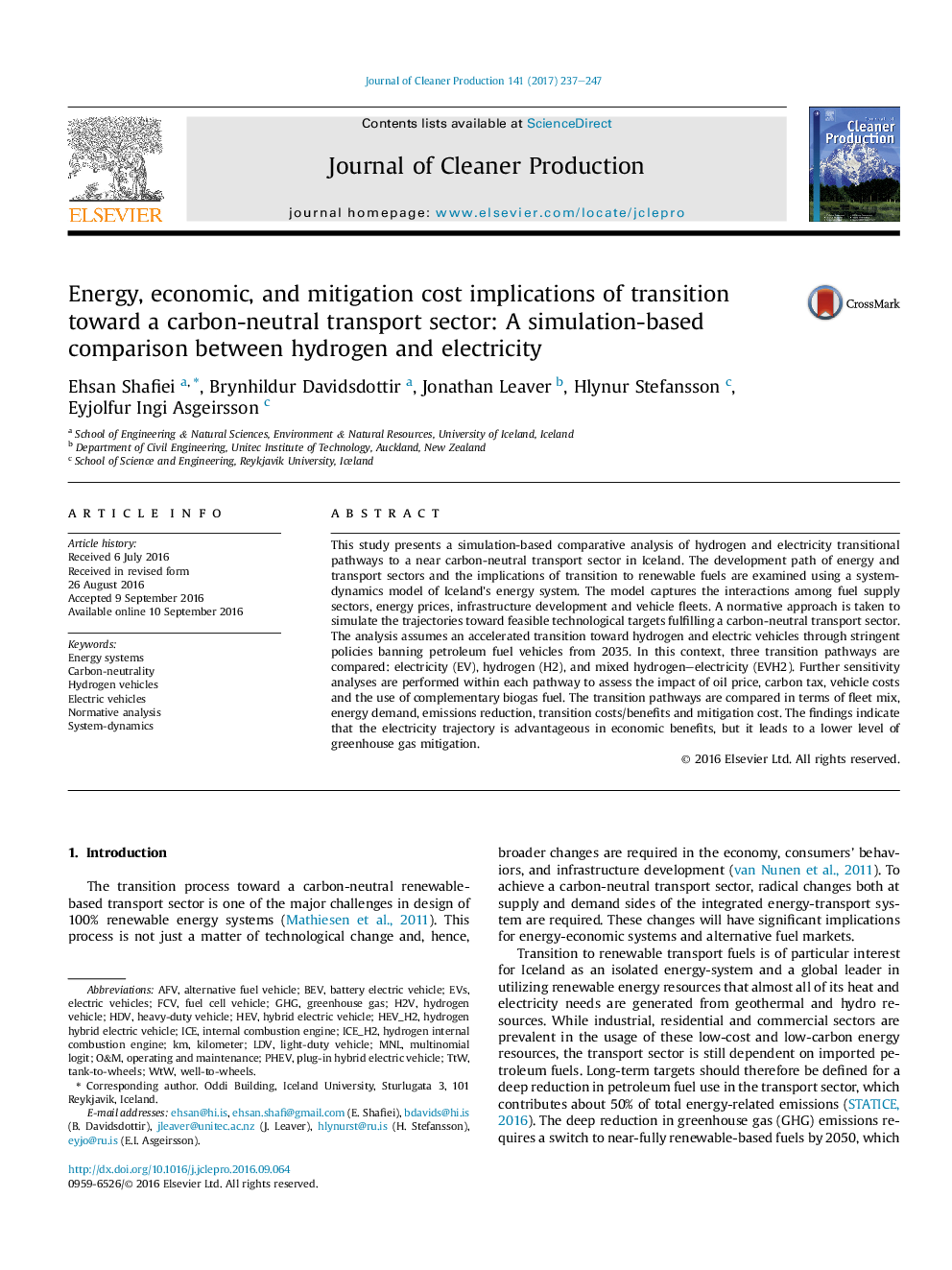ترجمه فارسی عنوان مقاله
پیامدهای انرژی، اقتصادی و کاهش هزینه انتقال به سوی بخش حمل و نقل غیر کربن: یک مقایسه شبیه سازی شده بین هیدروژن و برق
عنوان انگلیسی
Energy, economic, and mitigation cost implications of transition toward a carbon-neutral transport sector: A simulation-based comparison between hydrogen and electricity
| کد مقاله | سال انتشار | تعداد صفحات مقاله انگلیسی |
|---|---|---|
| 105283 | 2017 | 11 صفحه PDF |
منبع

Publisher : Elsevier - Science Direct (الزویر - ساینس دایرکت)
Journal : Journal of Cleaner Production, Volume 141, 10 January 2017, Pages 237-247

